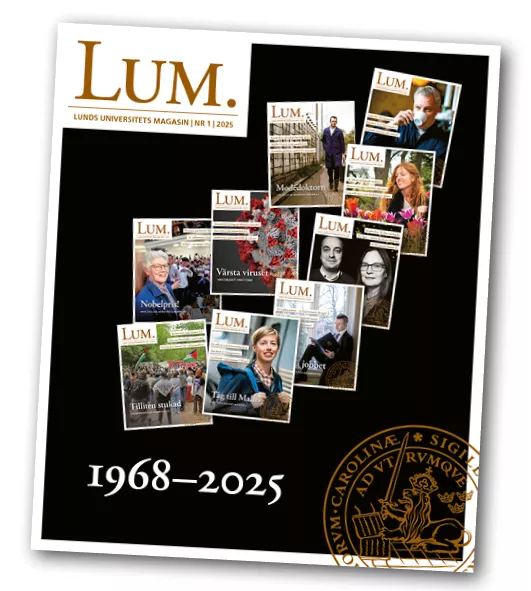The ordinary solar cells currently on the market can convert around 15–20 per cent of solar energy into electricity that we can use. The most common material is silicon.
"The best solar cells you can buy achieve around 22–23 per cent. And for those you need plenty of money", says Magnus Borgström, professor of Solid State Physics and research leader in the strategic research area of NanoLund.
He observes that there is no trend whatsoever towards humanity requiring less electricity in the future.
"On the contrary, we are using more and more. With increased taxes on fossil fuels, many people are considering electrical cars – which are monsters in terms of energy consumption."
Combining materials to capture the spectrum of solar light
How long it will take before we can buy solar cells with higher efficiency than those currently available will depend on how fast research can find new solutions that work both in theory and in practice.
"If you want to make the world's best solar cell, you have to ensure that you combine materials in such a way as to capture as many parts of the spectrum of solar light as possible."
Borgström and his team are working on nanowire-based solar cells.
Why nanowires?
"Nanowire-based solar cells are built in a way that resembles antennas. They have the ability to absorb passing waves even if the wave doesn't make direct contact with the surface but comes in slightly obliquely."
Nanowires get their name from the fact that they are only a couple of hundred nanometres thick (this is a few thousand times thinner than a human hair) and a few micrometres long. They are produced in the laboratory through a well-controlled process in which specific atoms are enabled to combine to form crystals and grow into wires.
Possible to produce cheap solar cell with expensive material
The materials in the nanowires that Borgström's team are working on cost roughly a little more than silver. But thanks to the fact that they are working on the nanoscale, the researchers can get around this detail.
"We have observed that, with our materials, it is sufficient to use half a gram per square metre – in other words almost nothing. So you can take relatively expensive materials, but nevertheless produce a cheap solar cell since you are using so little; the optical response is so strong."
Ultraflexible solar cells with nanowires
"The advantages of nanowires are that if you tear them off the substrate approximately as you would remove hair using wax, the solar cells can become ultraflexible, enabling the substrate used for synthesis to become reusable. The film used to tear the wires off can be made to resemble an elastic band, which can be stretched but also contracted. One idea is to position these kinds of flexible solar cells on windows instead of blinds, with adjustable transparency."
Some people have "green fingers" when in the lab
Internationally, research has achieved an efficiency rate of 47 per cent.
"It is easy to draw models, but when you then want to demonstrate them experimentally, many other factors enter into play. It is said that some people have green fingers – they are better than others at growing plants. In the lab, too, it is very clear that some people are better at experiments than others."
Borgström sees himself primarily as an experimentalist, but he has always appreciated the close collaboration with theorists. However, he is currently not spending much time in the lab.
"It's mostly paperwork."
Silicon plates will continue to dominate some time
The silicon plates will probably continue to dominate the solar cell sector in future. But Borgström believes that coating small surfaces with solar cells with a really high degree of efficiency could create decorative elements:
"Perhaps you need an LED on your jacket that displays your name?"
Or perhaps a built-in loading station for your mobile phone?
"Well, maybe not quite yet. Say you had a solar cell covering a surface of twenty square centimetres. With the current efficiency levels, it would produce around half a watt. This would mean that it would take almost forty hours to load a mobile phone battery. A bit long, perhaps."
.



